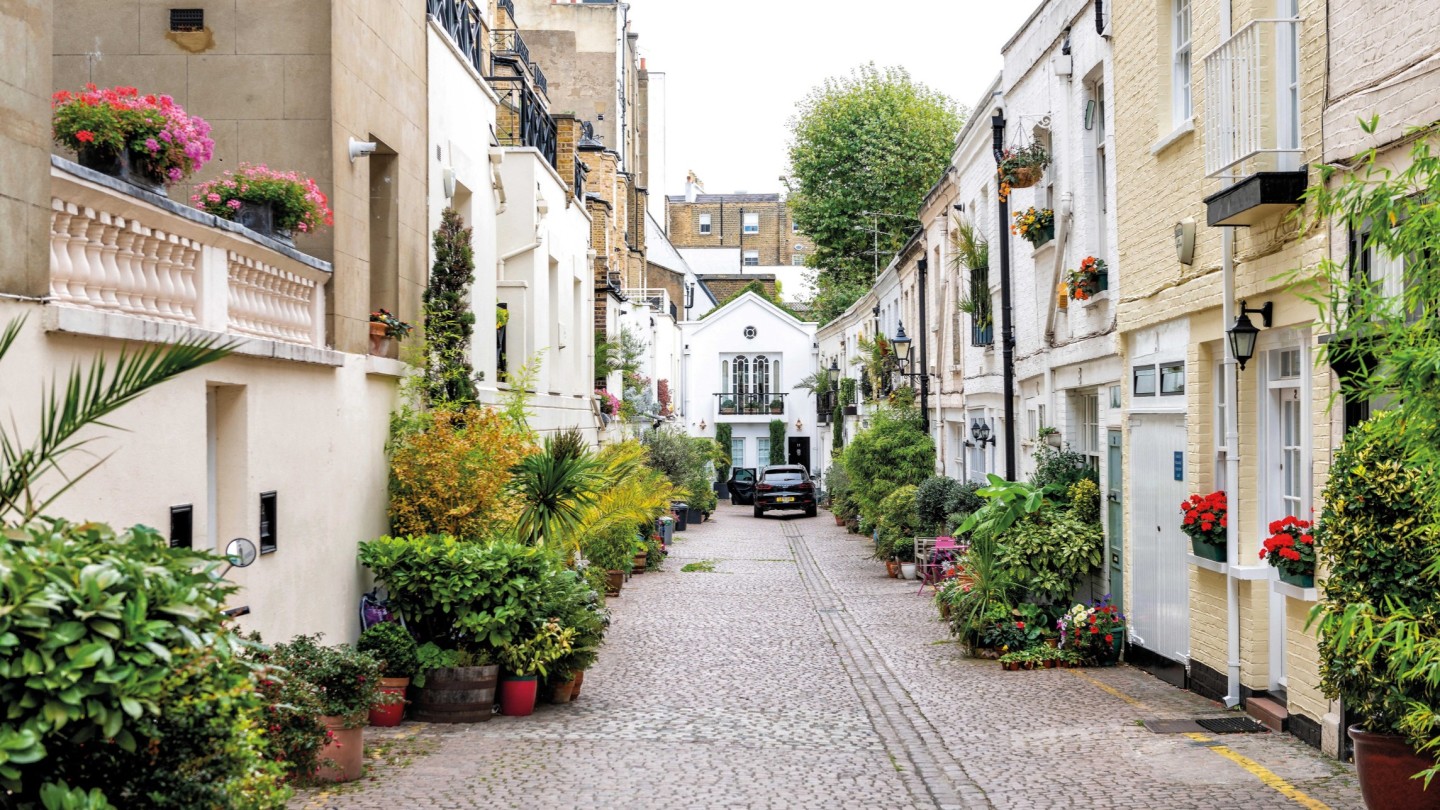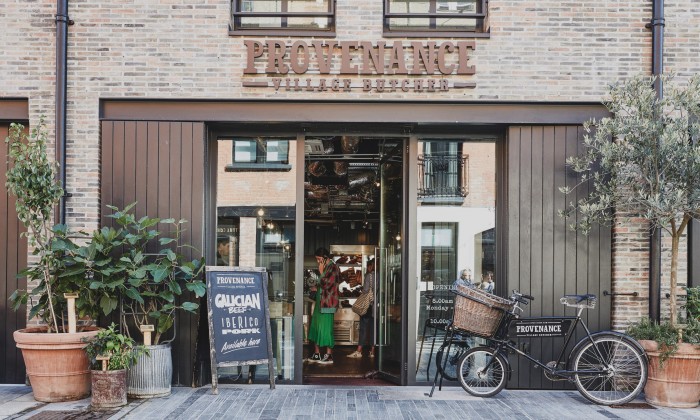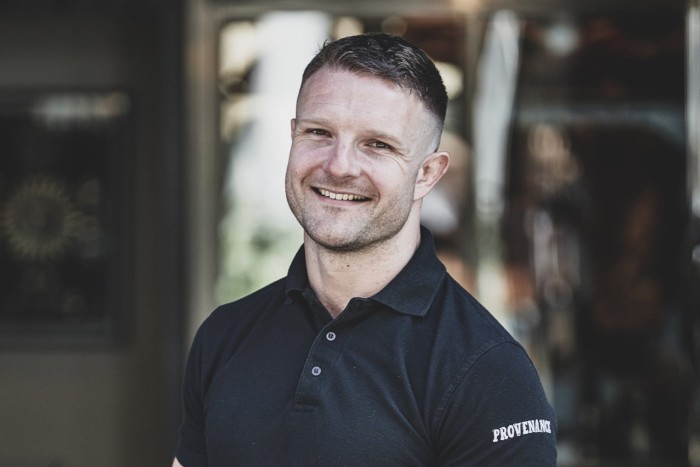Talk of the town: why prime property buyers are sticking to central London

Roula Khalaf, Editor of the FT, selects her favourite stories in this weekly newsletter.
Battersea Power Station may have a £37mn penthouse, but the newly redeveloped former industrial building on the Thames does not feel like a super-prime London property hotspot. In front, dozens of empty picnic tables arranged across a wide promenade separate the building from the river. Inside, rows of retailers, including familiar brands such as Adidas and Swatch, give it the air of an everyday shopping centre, rather than a residential enclave for the very rich. In Starbucks, Andrew, a 35-year-old tech worker, is unimpressed: “The place feels like someone has plonked a huge Westfield [retail mall] down right next to the river.”
Battersea Power Station is near the Nine Elms district, south of the river, on the other side from central London’s traditional upmarket residential areas. Cranes, site hoardings and unfinished apartment blocks stretch across Nine Elms down the river to Vauxhall Bridge, testifying to the fact that the most visible changes in recent years to London’s luxury housing market — and the city’s skyline — have been outside the centre.
But, when it comes to the most expensive homes, the traditional hotspots of Mayfair, Belgravia, Knightsbridge and Chelsea still dominate. Some 131 of 176 properties that sold for more than £5mn in London between January and June were in the boroughs of Kensington and Chelsea or Westminster, according to Land Registry data analysed by estate agent Hamptons.
The central London market is booming and is now above pre-pandemic levels. So far this year, there have been 81 per cent more sales above £5mn than in the same period in 2019. By comparison, sales in London’s most desirable outer neighbourhoods, such as Chiswick or Queen’s Park, are up 13 per cent, according to LonRes, a property data provider. Recent increases in mortgage rates this year have left sales in outer neighbourhoods down 19 per cent compared with 2021, although those for £5mn-plus properties remain steady.
“The Power Station is not really on my radar for those higher-value sales: most of my clients wouldn’t consider crossing the river,” says Alex Christian, co-head of the London private office of estate agent Savills. International buyers whose main home was not in London deserted the city during the pandemic but are now returning. And super-rich business people and their families are seeking the best homes in central London, according to buying agent Roarie Scarisbrick.

He weaves through the back streets of Chelsea and Belgravia in his electric car, around Pelham and Egerton Crescents, each of which hugs private gardens. At 26 Pelham Crescent, a blue plaque commemorating an eminent former resident — Nigel Playfair, an early 20th-century actor and producer — speaks of the neighbourhood’s heritage.
“These homes are very popular with Americans working in tech and finance. Also, the buyers who have come from Hong Kong, Kuala Lumpur or Mumbai, who appreciate the peace and greenness,” Scarisbrick says.
Houses here fetch between £10mn and £15mn, or £3,000-£3,500 per square foot. Buyers on smaller budgets head south, crossing King’s Road to the part of Chelsea containing Redburn Street and Flood Street, where smaller, Victorian terraced houses sell for between £4mn and £6mn, equating to £2,000-£2,500 per sq ft.
Soon we arrive at The Boltons, Chelsea’s crown jewel, where the largest homes — including several owned by Middle Eastern royals — fetch around £50mn. After counting seven, I lose track of the number of homes behind construction hoardings. Frequently, alterations are on a gigantic scale: on one, only the facade remains, propped up by huge steel supports like a decaying film set.
Sterling’s weakness against the dollar — in which many hold their wealth — is an important factor in the prime central London market, according to estate agents and developers.
However, rising interest rates — most of the super-rich still borrow for their purchase — means buyers are driving a harder bargain, says Christian. “I’m getting more inquiries from the Middle East, and US techies and hedge funders. What’s keeping the super-prime market going is a willingness for sellers to meet buyers half way. Owners of homes that have been on the market for a long time are cutting their prices to achieve a sale,” he adds.
But developers of new-build apartment blocks in central London — where some homes have sold this year for more than £5,000 per sq ft, according to LonRes — dismiss talk of discounts. They are serving the super-rich vogue for apartments with hotel-style facilities, including concierge teams and extensive leisure facilities. Savills says there are 640 such schemes worldwide and that this number will increase to 1,100 by 2027.
As things stand, though, no more large luxury flats will be coming to Mayfair, after Westminster council ruled that new-build homes could be no larger than 200 sq m. And, in Mayfair, size matters. In 2021, 1 Grosvenor Square, a new development, was launched with 45 homes for sale. Today, with all but six sold, the building contains 39, after buyers of some adjacent homes knocked them through. Gabriel York, co-chief executive of Lodha UK, the developer, says these amalgamations took place before the new rules came in. He adds that most residents are CEOs, tech entrepreneurs or hedge funders who favour the central location. “They are working all hours and want to be close to the office.” Many residents are moving to Mayfair for the first time, he says. “We built it for oligarchs and sheikhs, but most of our buyers have been from the US, the UK and Europe.”
Peter Wetherell, a longstanding Mayfair estate agent, says: “Increasingly, developments like 1 Grosvenor Square are favoured by buyers who would previously have spent three to six months each year renting a suite at [Mayfair hotels] The Connaught or Claridge’s.”
Wetherell, Scarisbrick and Christian all point to growing activity by buyers from the US and China. “At the back end of last year, roughly 10 per cent of my viewings were buyers from greater China and very few were looking at homes north of £10mn. Now, they account for 50-60 per cent of viewings,” says Christian.
In addition to the lifting of lockdowns and travel restrictions, concerns about the domestic economy and protecting assets from appropriation by the state play a role for Chinese buyers, as President Xi Jinping tightens his grip on power. One Channel Islands-based trust expert says he is helping two Chinese entrepreneurs buy homes in Europe: “Both are worried their assets may be seized and want somewhere their wealth and family can be safe.”
These buyers also want a pleasant city centre location. For Scarisbrick, this element is crucial to central London’s continued appeal. As our tour passes east from King’s Road through Sloane Square to Eaton Square, the concentration of flats increases. Scarisbrick points to a private porter, uniformed and standing sentry-like with a furled umbrella.
Employed by the Grosvenor Estate, which owns much of the land here, porters can be seen day and night, on hand to help with luggage or provide a reassuring presence to residents coming home late at night.
For Yolande Barnes, chair of the Bartlett Real Estate Institute at University College London, the porters are one element of an integrated approach by central London’s big landowners, which have invested in the appearance of neighbourhoods, including shops and green spaces. “The great estates have been getting the place-making right for decades,” says Barnes, referring to Grosvenor and Cadogan, which own the largest share of freeholds in Mayfair, Chelsea, Knightsbridge and Belgravia; the Portman Estate, which owns much of Marylebone; and the Crown Estate, which is focused around St James’s and Regent’s Park.
She contrasts the pleasing streetscapes, well-designed public spaces and carefully selected shops in these areas with the “poorly planned sprawl” of Nine Elms, where multiple landowners have designed independent developments, leaving a hodgepodge of disparate sites. “It’s blooming awful and typical of the general trend of 20th and 21st-century urbanism that prioritises roads over streets. We’ve forgotten [how] to build places for people,” she says.
On a mild autumn morning, Chelsea’s Pavilion Road, redeveloped by owner the Cadogan Estate, is bustling. People are walking dogs, chatting in coffee shops, or collecting supplies from the elegant fishmonger, baker, greengrocer and wine store. At Provenance Village Butcher, which opened its first shop in Notting Hill, west London, in 2013, a customer has just bought three Japanese Wagyu steaks for £350. Co-owner Struan Robertson attributes the high street’s success to his landlord’s careful stewardship.

Cadogan protects the specialities of shops — Robertson can’t sell wine and the wine shop can’t sell fresh meat, and so on. In exchange, Cadogan sets reasonable rents and keeps a close eye on what the shopkeepers do. “If you are charging Chelsea prices, people expect Chelsea quality,” Robertson says. “But it works: shoppers can fill their whole basket on the street, so they come here rather than [upper-range supermarket] Waitrose.”
Barnes is clear about cause and effect. “Obviously, central London is all about location. But you have to ask why the location is desirable in the first place. It’s not because they are super-prime that they are being invested in and managed in this way; it’s because they are being invested in and managed in this way that they are super-prime,” she says.
Nearby, in Mayfair, a well-heeled resident has watched the latest rejuvenation of Mount Street (the high street linking Berkeley Square with Hyde Park) courtesy of Grosvenor Estate. “The first time I noticed it was about 10 years ago, when a shop opened selling the scent I wear,” he says. “Up to then, I’d only been able to find it in [department store] Harrods or Paris.” Since then, the place has mellowed, with restaurants easing dress codes, private clubs widening their membership, scruffy corners being spruced up and facades restored, he adds.
The Mayfair resident has been to Battersea Power Station but says he would never consider living there. “Yes, the £37mn penthouse was fantastic but, whether it’s there or any other big new development, I’d find it very hard to move. I’m living in the most prestigious village in the world. And I just wouldn’t want to go to the other side of the river.”
This article is part of FT Wealth, a section providing in-depth coverage of philanthropy, entrepreneurs, family offices, as well as alternative and impact investment
Comments